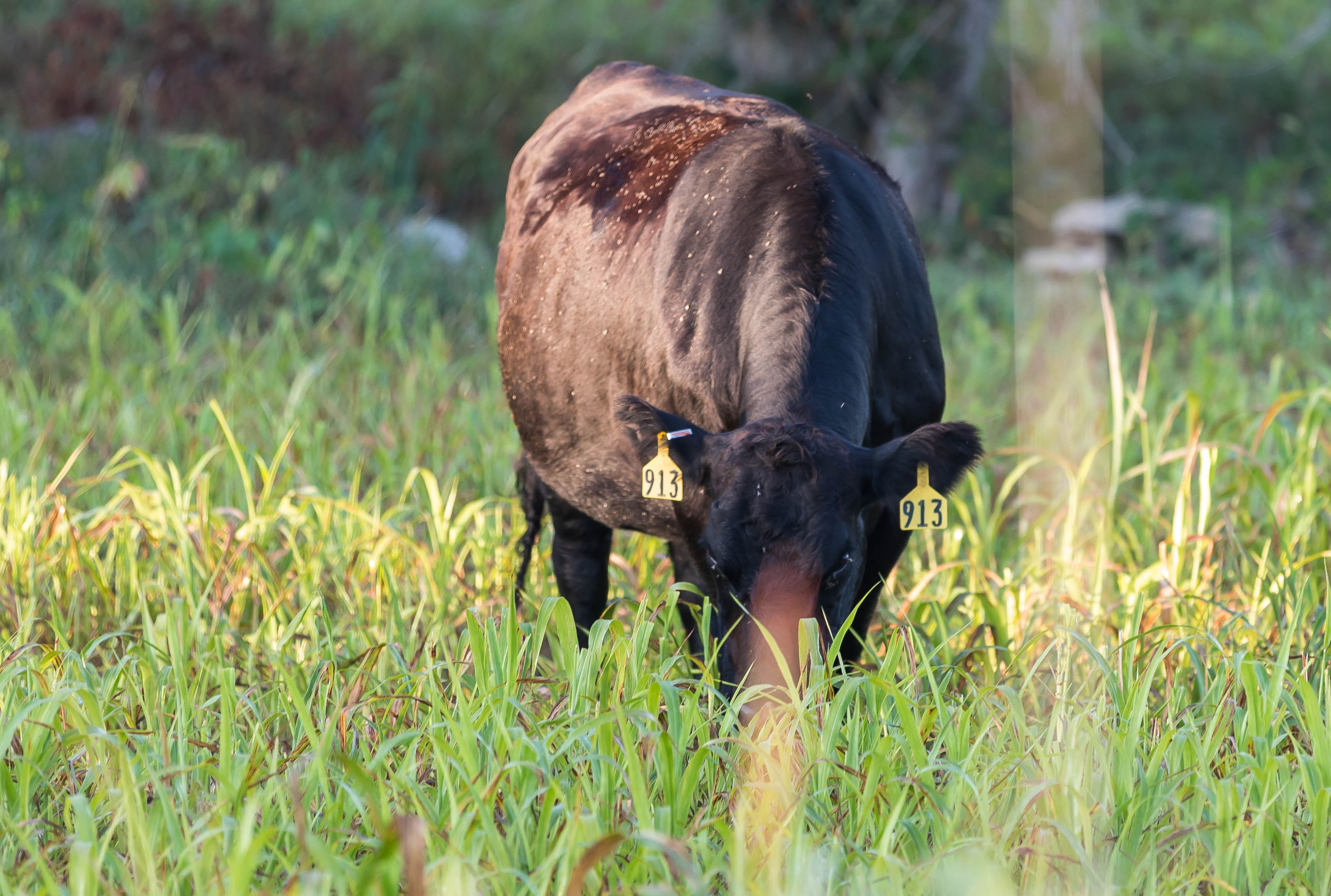
Grazing cows in the late summer on Sudangrass is one way to help cows maintain body condition. | Download this photo.
Cattle Chat: Body condition score as a management tool
K-State beef cattle experts offer advice on how to optimally feed cows post-weaning
Aug. 30, 2033
By Lisa Moser, K-State Research and Extension news service
MANHATTAN, Kan. — Body mass index is one measure that people use to evaluate their overall health when talking with their medical team.
In much the same way, veterinarians and beef producers are able to measure the well-being of the cow herd by assigning a body condition score of each animal, according to the experts at Kansas State University’s Beef Cattle Institute speaking on a recent Cattle Chat podcast.
“Cows are ranked on a scale of 1 to 9, with ones being very thin and nines being extremely obese,” veterinarian Brad White said. “Cows post-weaning will typically score in the 4-6 range.”
Veterinarian Bob Larson recommends evaluating the cows’ body condition at three points in the yearly cycle — at weaning, a few weeks prior to calving and right ahead of breeding.
“The main reason for body condition scoring is to identify the cows that need additional supplementation and feed them separately from the rest of the herd,” Larson said.
Beef cattle nutritionist Phillip Lancaster said late summer/early fall is an optimum time to evaluate the spring calving cows because of the ability to adjust their supplement needs at a time in the pregnancy when there is a low nutritional demand.
“During the next two months the spring-calving cow will have the lowest energy requirements that she will have in the year because she is in mid-gestation,” Lancaster said.
He added that during this time of year, a cow with a good body condition score can maintain her weight with poor quality forage, and those that need to add body weight can be separated and turned out on the best available forage to economically add condition.
“With a spring-calving herd, the goal would be to have the cows at a body condition score of five in December,” Lancaster said.
While turning those cows that need to gain back out on fall pastures is a strategy, Lancaster said that may not be possible in areas where there has been drought.
“Producers may need to look at building the cheapest ration, and that is not always a diet that is high in forage,” Lancaster said.
He encouraged producers to look at other potential feed sources, such as silage, or even allowing them to graze fields where the crops have failed.
“If a crop isn’t going to produce like it should, it may be best to use it as a feed source for the herd rather than attempting to harvest it,” Lancaster said.
White cautioned that producers following that option need to make sure there are no toxins in the field and think through how they transition the cows to a grain-based diet.
“Turning out cows into a corn field is going to require different management than turning them out on corn stalks after the harvest,” White said. “Just make sure you have a plan on how you are going to handle the cows moving forward.”
To hear the full discussion, listen to the Beef Cattle Institute Cattle Chat podcast online.

